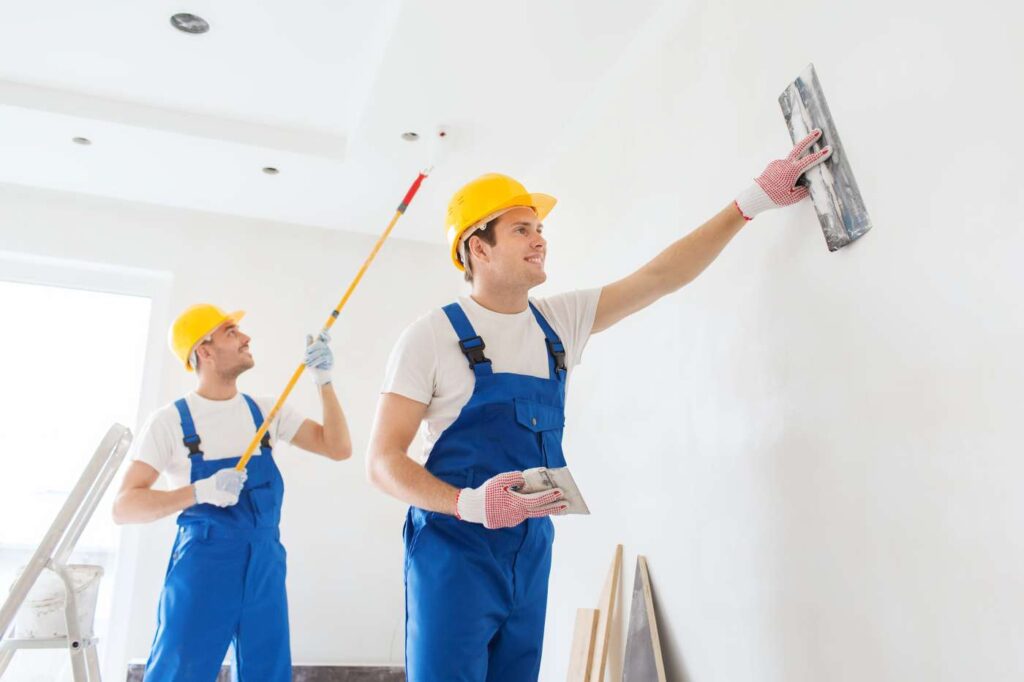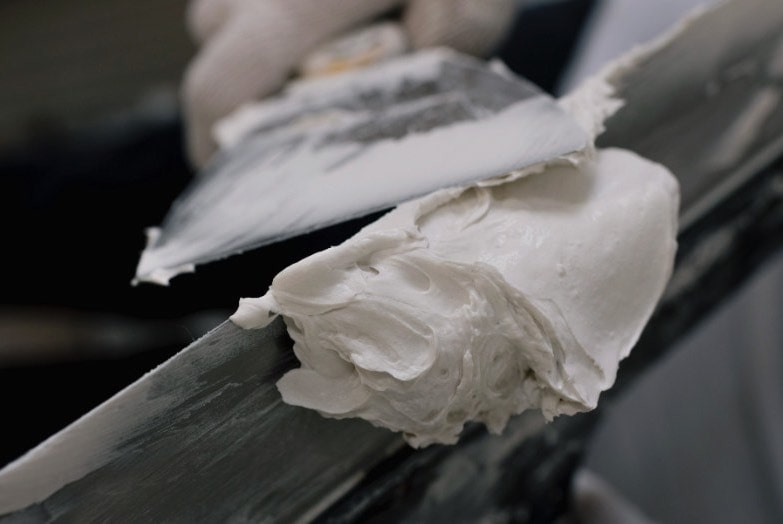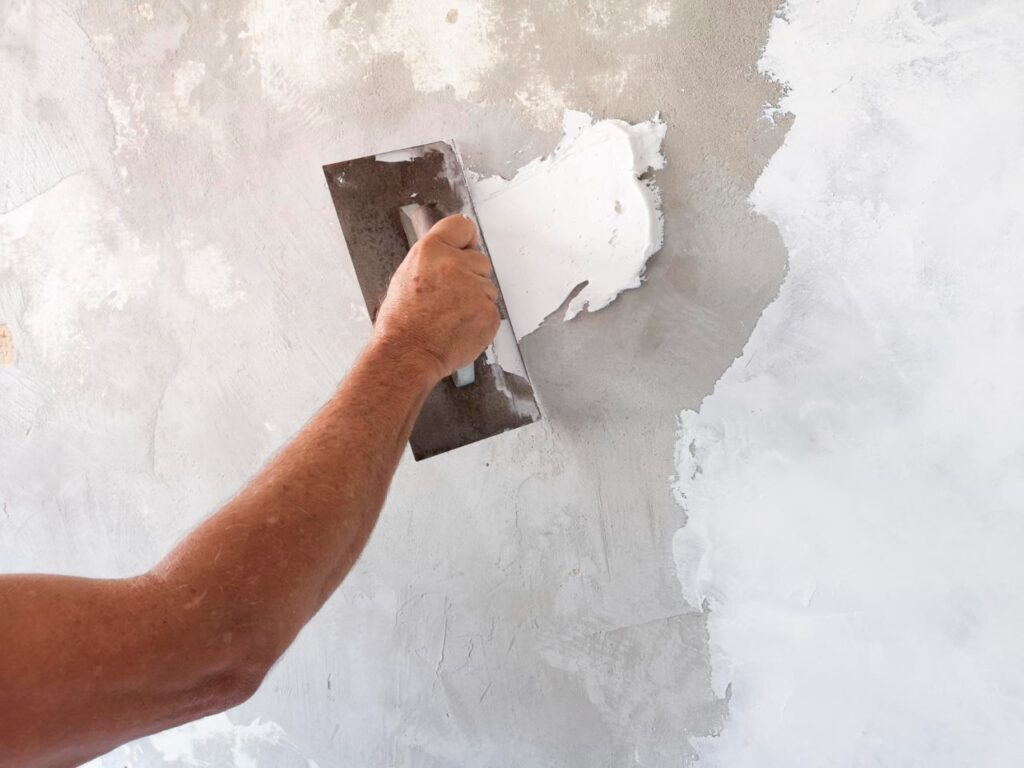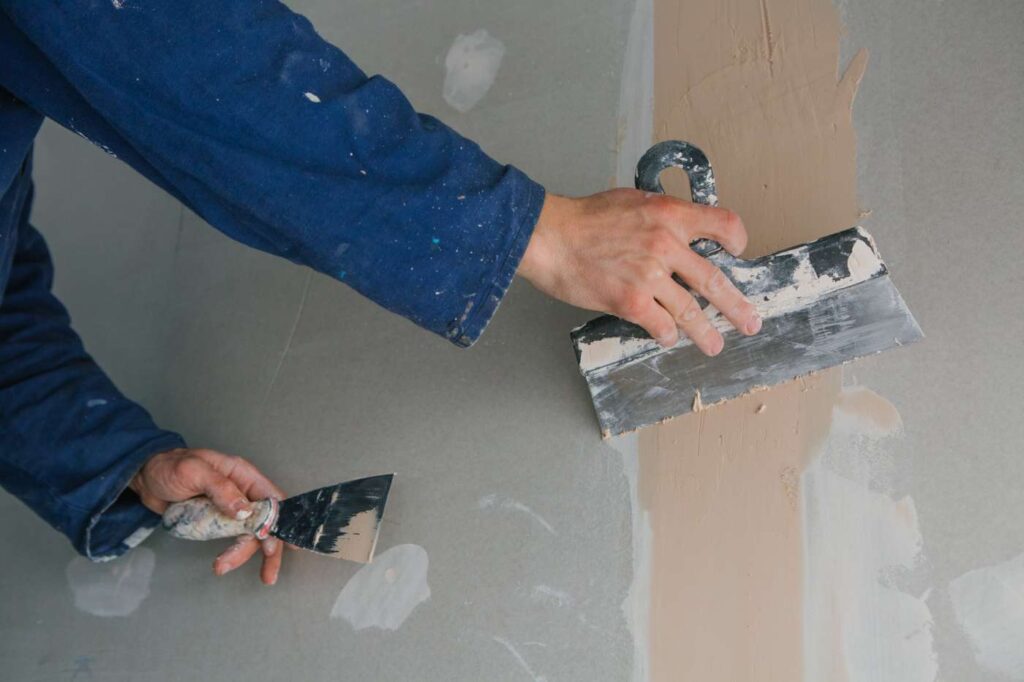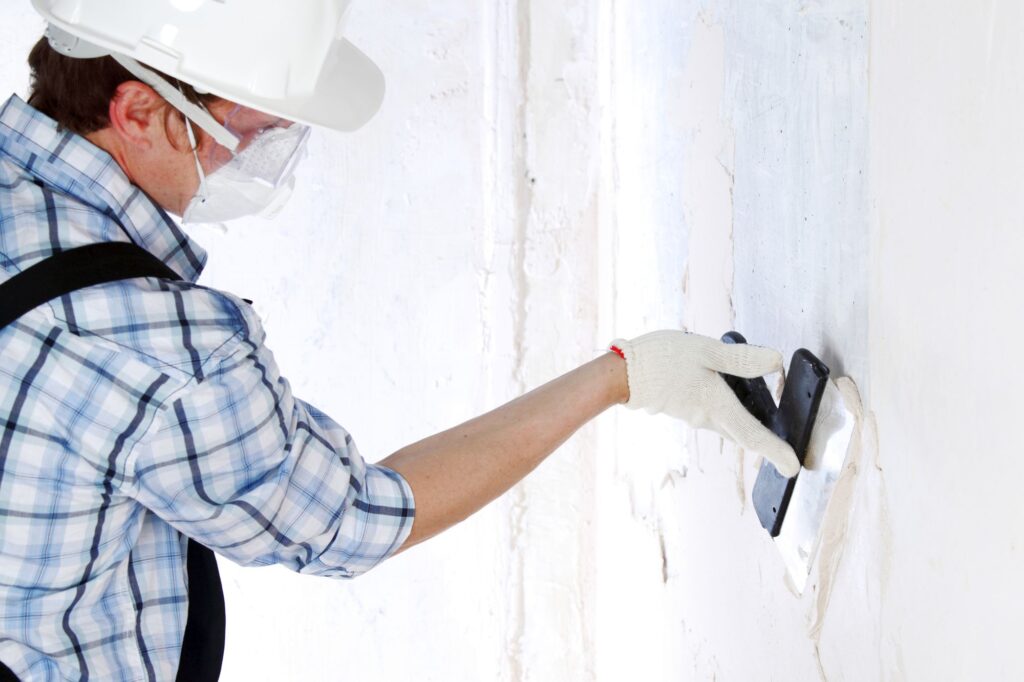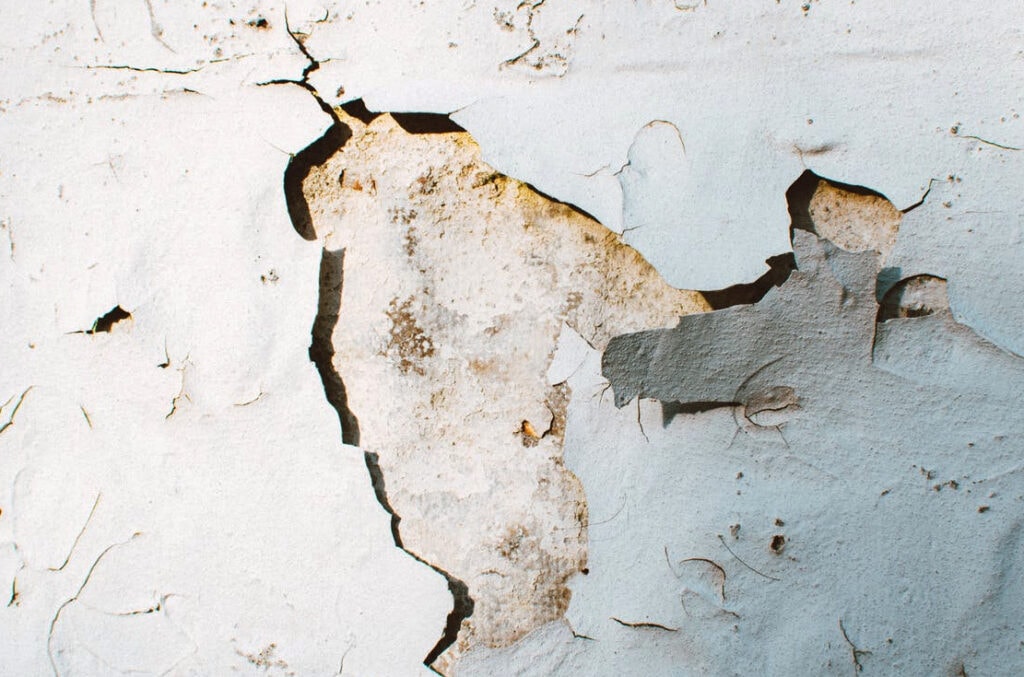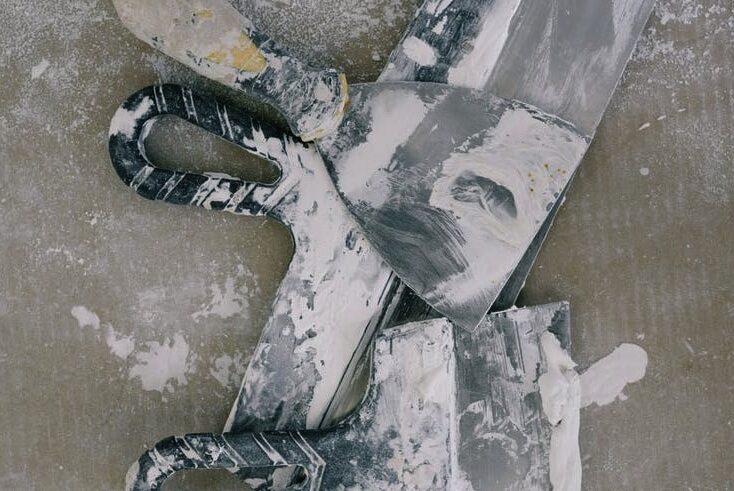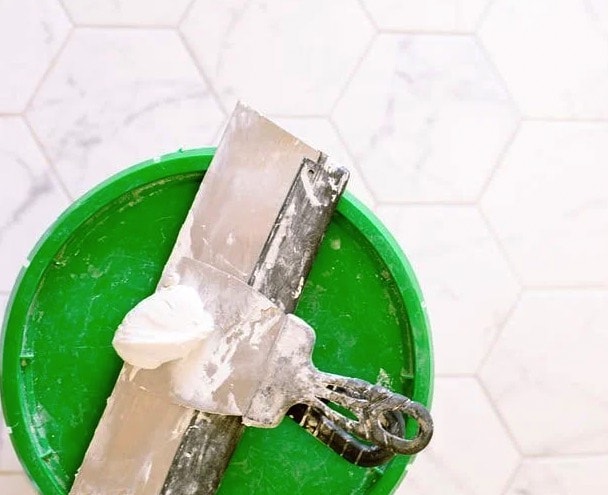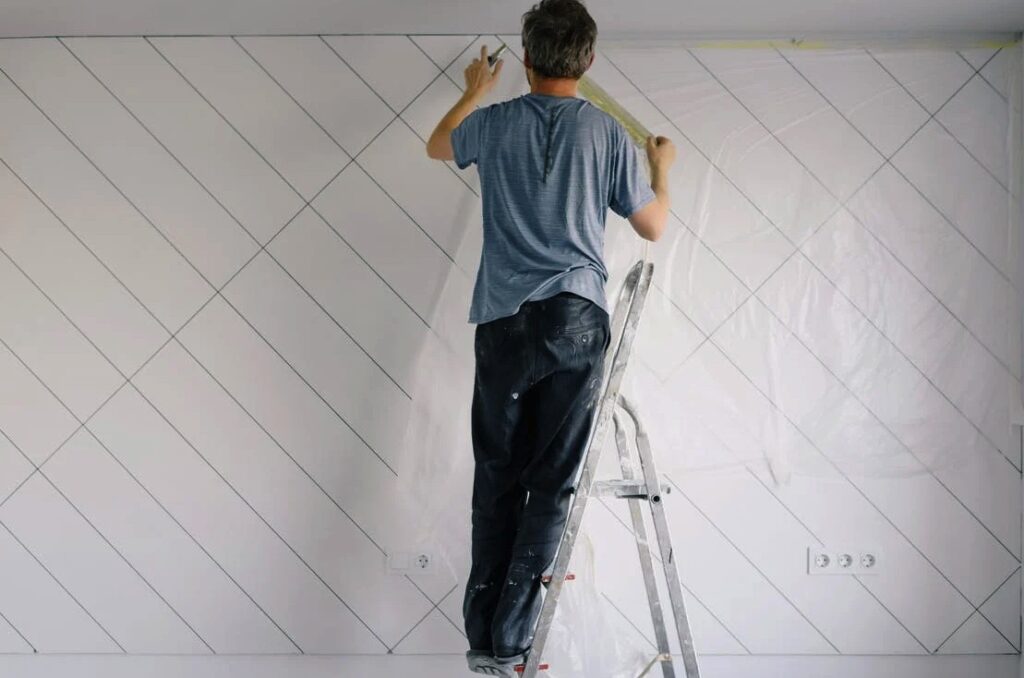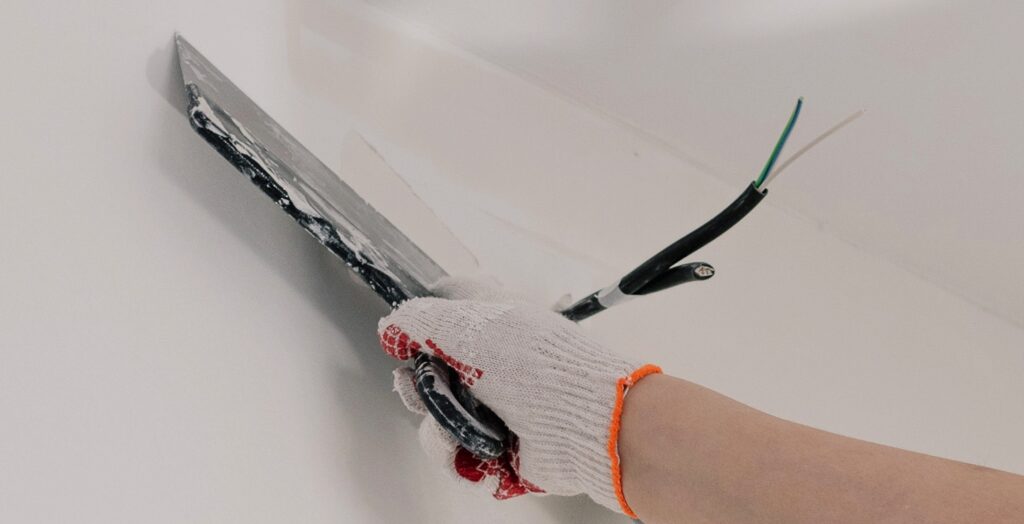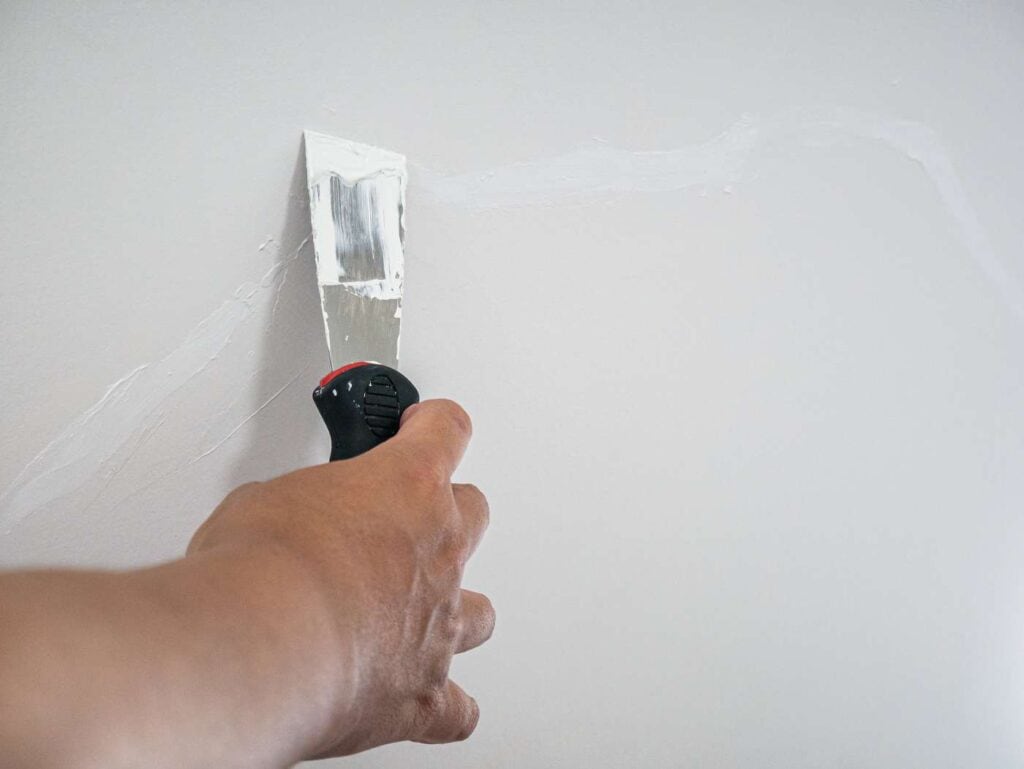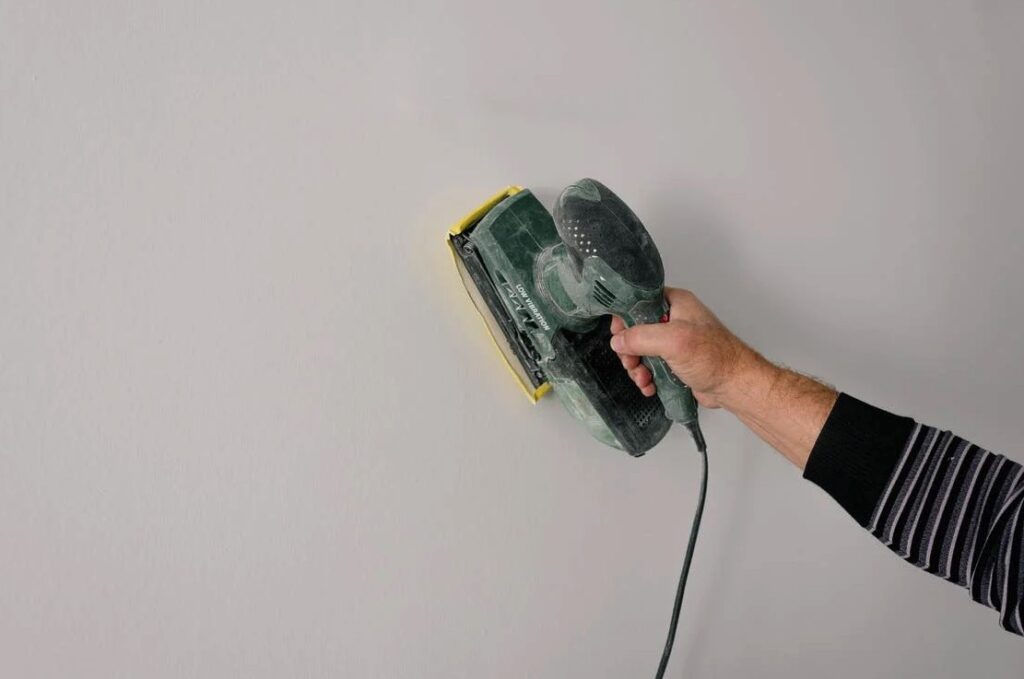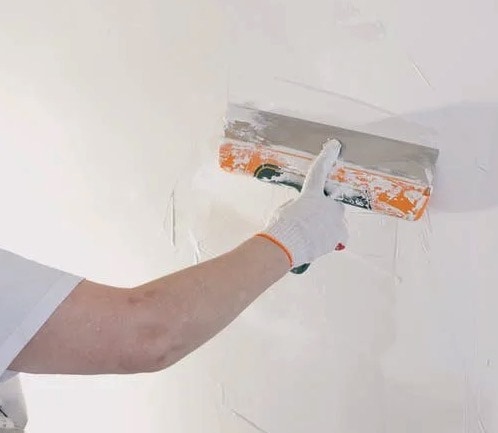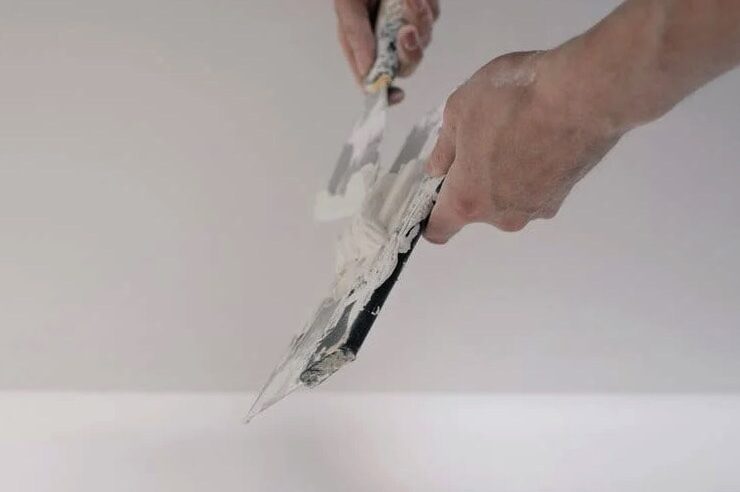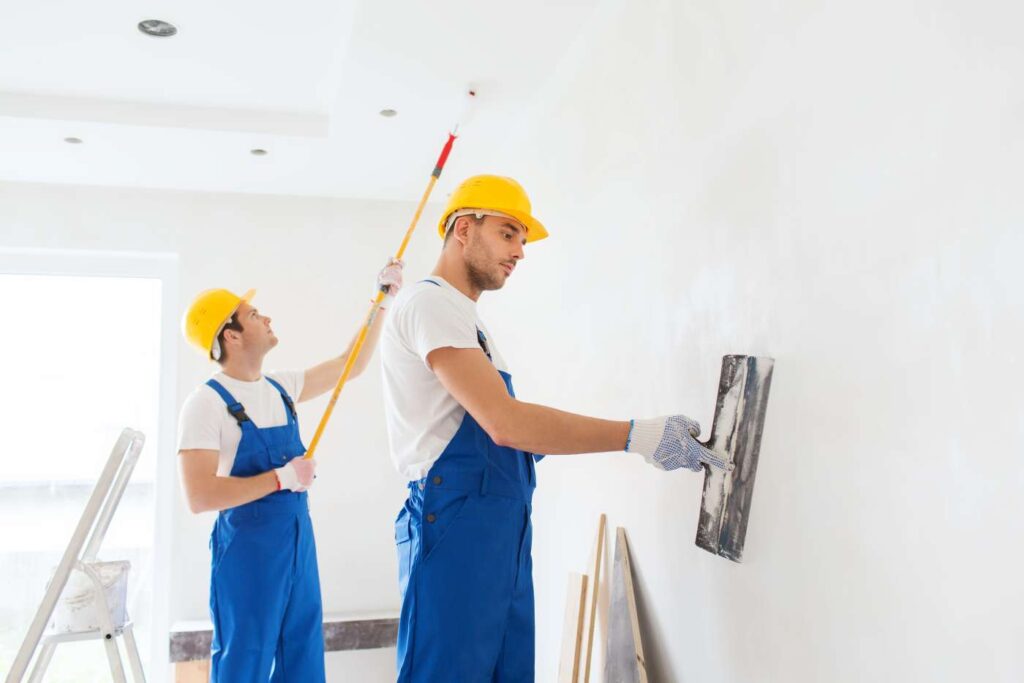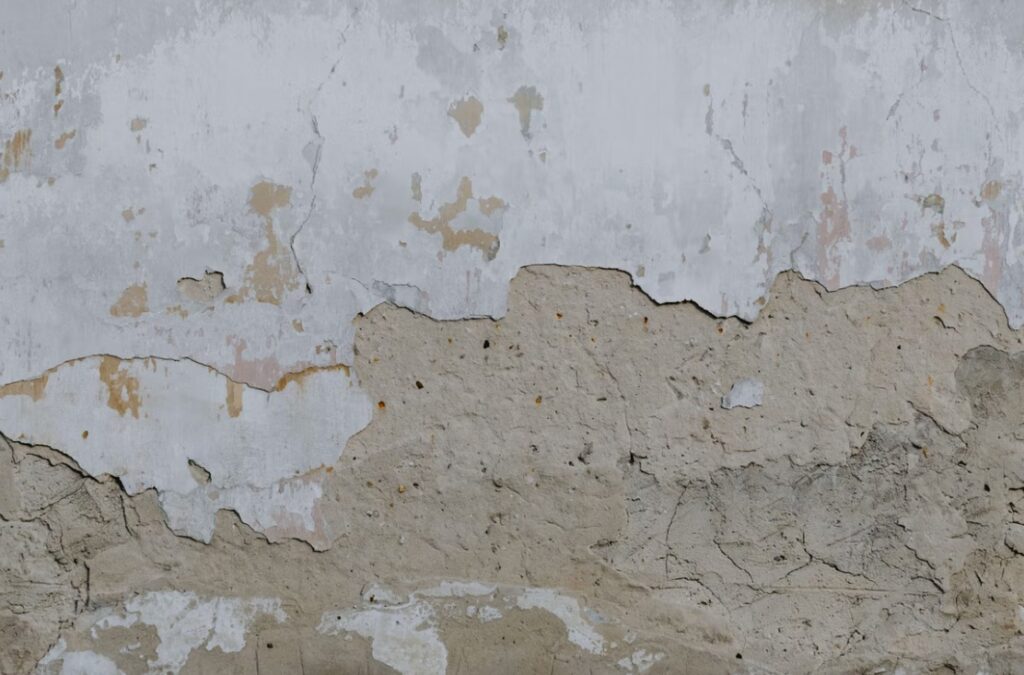Because it provides a flexible and long-lasting surface for interior walls and ceilings, plastering is an essential part of home repair and construction projects. For those who are new to plastering and want to know what it takes to do a good job, it's important to start with the basics. Surface preparation is an initial step in home plastering. In order to prepare a surface for plastering, it must first be cleaned, cleared of dirt, and checked for defects. The plaster's appropriate adhesion and the flawless finish it produces depend on the surface preparation.
When plastering a home, choosing the appropriate plaster is very crucial. Gypsum, lime, and cement plaster are the three main types of plaster, and they all have different uses and characteristics. You can't get the look you want without first learning about the various plasters and then picking the one that's most suited to your project. Also, before you start plastering, make sure you know what equipment to use and how to apply them properly. In residential plastering, common tools include hawks, floats, and trowels. To achieve a smooth and even finish, it is required to apply a base coat and finishing coat.
Lastly, plastered surfaces must be properly cared for and maintained in order to ensure that they last a long time and do not fade. Cleaning and checking for damage or wear should be part of this routine. Learn the fundamentals of home plastering, and even a beginner can take on their plastering jobs with confidence and seem like a pro.
Is Plaster Necessary, and How Does It Work?
Walls can be finished with smooth, textured, or ornamental plaster. Plastering improves the longevity and resistance to damage of walls, which is useful not only for their aesthetic value but also for their resistance to harm over long periods.
The various advantages plastering offers to those who like living or working in spaces with walls have kept it in use for as long as it has. In this section, we will go over the three main advantages of plaster:
- For safety, people have learned the hard way from the three pigs that nothing beats a solid cement or brick wall. Plaster adds an extra layer of protection, making walls more durable than bricks, which are nonetheless vulnerable to weather and time.
- Plastering your walls will make them look smooth and finished.
- Appeal to the eye—plastering gives your walls a nice sheen, elevating visual and tactile attractiveness.
A Guide to Plastering Walls Properly
- Consistent and gradual: Plastering large or tiny walls may be an uphill task. We want to do things well the first time rather than rush and make mistakes.
- Get yourself set up: When plastering, it is crucial to have the proper tools. In particular, you will want to be with a trowel, float, and screed.
- Take your time: The drying time of plaster takes time to occur. Take your time with drying to avoid dealing with cracks or uneven wall finishes.
- Clean the area thoroughly after plastering so that dust and dirt don't go everywhere.
Plastering Tools
Trowel
Get the correct tools for the job if you want your plaster to be smooth and, more importantly, level. When plastering, the trowel is a must-have tool. It smooths and applies the plaster. If this is your first time plastering, a smaller trowel is simpler to control. Although using a smaller trowel can perhaps leave markings in the plaster, lengthier trowels necessitate greater dexterity and might make it exceedingly challenging to attain a uniform surface.
Plastering Hawk
A plastering hawk is the next tool on the list. The one with the square shape and the stick-shaped handle is this sheet. Plasterers use cranes to support the plaster while they work. Although it is optional, finding a skilled plasterer working without this instrument is unusual.
Using a hawk and trowel properly demands practice and expertise, much like any do-it-yourself task. Look at some how-to videos to see what the pros do. Once you're comfortable with your method, test it on a piece of plywood or other makeshift wall before attempting it in your home.
A variety of materials are home to plastering hawks. A foam hawk is the way to go for those just starting out. Because of their lightweight, foam hawks are ideal for those who aren't accustomed to physical labour (plastering is particularly taxing on the muscles of the arms). You can readily replace worn-out foam hawks because they are inexpensive.
Plaster Mixer
Use a plaster mixing tool if you find it easier to mix your plaster. Making plaster no longer requires physical exertion, thanks to plaster mixers. Like an electric cake whisk, but for plasterers. Buying a plaster mixer is smart if you have a large area to plaster or intend to undertake more plastering in the future. On the other hand, you could ask around to see if someone you know or a nearby business offers mixers for rent.
Other Plastering Tools
The following items are also necessary for plastering:
- Knife for jointing
- Paint blending vessel
- Brush with water or a sponge.
- Cleaning brush for plaster bucket
With your newfound knowledge, you can give plastering a go. Remember that a professional plaster finish is within your reach with enough experience and perseverance.
Different Plasters and Their Applications
Even though drywall is commonly used in new construction and remodels, plaster is still necessary in some situations. Knowing the many kinds of plaster and when to use them will help you choose the correct material for any job, whether renovating an existing house or constructing a new one from the bottom up.
Lime Plaster
When you hear the word "plaster," picture lime plaster. Lime plaster has been utilised for millennia by people to construct walls and houses. The basic ingredients are lime, water, sand, and sometimes horse hair for binding purposes. In homes constructed before the early 1900s, it is not uncommon to find hairs embedded in the dried plaster during renovations.
Lime plaster is great for walls in wet areas like kitchens and bathrooms because it is flexible and breathable. Because of its flexibility, it can shift as a house settles, reducing the likelihood of cracks.
Various plaster varieties have mostly replaced lime plaster, the standard for centuries. It takes more time to apply and costs more than gypsum plaster because of its higher price tag and longer application time.
That material is usually preferred when renovating older homes, especially those that originally had lime plaster.
The best uses for lime plaster are restoring historic homes or giving a new house a classic charm.
Gypsum Plaster
Modern building and repair projects often opt for gypsum plaster due to its reduced cost. The powdered form of this plaster is composed of calcium sulphate dihydrate. Once combined with water, Gypsum plaster requires the plasterer to move swiftly to apply it. Without this, "cold joints"—areas of weakness—may develop.
Because of its inferior breathing capabilities compared to lime plaster, gypsum plaster is not recommended for usage in damp environments like bathrooms and older homes.
Modern interior walls (avoid using them in wet areas like kitchens or bathrooms) are the best places to use gypsum plaster.
Cement Plaster
You'll need sand and cement instead of gypsum or lime to make cement plaster. You'll need to move quickly because it sets quickly and is thick. Cement plaster can be applied to interior and exterior walls; however, it is not usually the best choice for achieving a smooth wall due to its rougher surface than gypsum or lime plaster.
Gypsum and lime plaster are more pliable and airy than cement plaster. It might be most effective when applied to the outside walls of relatively new houses.
Cement plaster is best used for coating outside walls.
Clay Plaster
The basic ingredients of clay plaster are clay, sand, and water. If you want to skip painting the walls once you're done, you can add pigments to the clay-plaster mixture.
A weathered look is achieved by applying plaster. Consider using clay plaster instead of paint to reduce VOC emissions in your home.
Because clay is a good water absorber, this plaster could be better for damp environments like bathrooms.
Walls within contemporary houses are the best places to employ clay plaster.
Plaster Finishes
There are a variety of plaster finishes to choose from. Plaster finishes influence the walls' texture, colour, and general look. A plaster finish, for instance, can produce either a glossy, smooth surface or a rugged, textured one. Additional finishing possibilities can be achieved by combining various pigments with lime or clay plaster.
Although there is a wide variety of plaster finishes, Venetian and Tadelakt are among the most common.
Venetian
Lime plaster with pigment added is called Venetian plaster, and it gives walls a deep tone. As a final step, the walls are often coated with wax to give them a glossy appearance.
Tadelakt
Aggregates are mixed into several varieties of lime plaster. The recipe for tadelakt calls for olive soap and lime plaster. Soap makes the plaster waterproof, making it perfect for places with a lot of moisture, including restrooms and shower stalls.
FAQs About Plastering
Plaster should be applied in thin layers using a trowel, starting from the bottom and working upwards. It's important to spread the plaster evenly and smoothly to achieve a uniform finish.
Achieving a smooth finish requires practice and proper technique. Using long, sweeping strokes with the trowel and keeping the plaster moist can help achieve a smooth surface.
Air bubbles or imperfections can be smoothed out by gently tapping the surface with the trowel or using a damp sponge to blend them in before the plaster sets.
The drying time for plaster varies depending on factors such as humidity, temperature, and the type of plaster used. Typically, plaster may take 24 to 48 hours to dry completely.
After the plaster has dried, lightly sanding the surface can help smooth out imperfections. Additionally, applying a primer and paint or wallpaper can protect and enhance the plastered surface, and regular maintenance such as cleaning and touch-ups may be necessary to keep it looking its best.
Important Safety Considerations for Any Plastering Job
Having A Basic Understanding Of Plasterers' Safety Regulations
Professional plastering is not inherently dangerous, unlike jobs involving scaffolding or other elevated platforms. Nonetheless, plasterers should still use safety gear and observe all other applicable safety protocols while on the job.
Ensuring A Safe Working Environment
Before proceeding with the plastering project, ensuring the site's safety is important. All plasterers involved in the assigned job should also be equipped with knowledge regarding workplace safety. For one, visible safety signs should be displayed everywhere within the work area.
Employing Personal Protective Equipment (PPE)
Work boots, face masks, and safety glasses are all necessary protective gear for plasterers to have on the job. People who aren't employees or locals should stay out of the area as much as possible. Make sure that anybody visiting the job site wears protective gear, including hard hats or boots, just in case an inspection is scheduled.
Being Cautious While Working At Heights
Working on a high surface requires extra caution to prevent the unintentional fall from a height. Ensure the ladder you're using is sturdy and has all the necessary fasteners before you begin. To avoid injuring yourself, do not try to climb a ladder by skipping steps; doing so puts you in danger of sliding and falling. When working with power tools, plasterers should always wear protective gear and keep items like heat strippers and drills out of the reach of children and pets. Workers must utilise plastering stilts when plastering in high areas to provide a solid basis for their ladders.
Make Sure That Other Employees Who Are Working With You Are Safe.
Plasterers often collaborate with other tradespeople, including carpenters and plumbers. Having stated that you must ensure their and your safety. All of the employees are subject to the same rules.
Like all construction workers, plasterers face unique health and safety hazards on the job. That is why it is critical to learn the fundamentals of occupational health and safety to protect yourself from harm. We must all work, but we must not put our safety at risk in the process.
Conclusion
Plastering is an important step in giving walls and ceilings a beautiful, smooth, and uniform look. It gives the walls a nice look, keeps them from getting damaged, and makes sure they are smooth and flat. With plastering, walls are safer and last longer than walls made of bricks. It also gives walls a nice shine, which makes them look and feel better.
To plaster walls properly, you need to be steady and slow, and you need to use the right tools, like a trowel, float, and screed. To avoid cracks or uneven finishes, it's important to give the paint time to dry. After plastering, clean the area well so that dust and dirt don't spread.
Some plastering tools are a shovel, a plastering hawk, a plaster mixer, a knife for jointing, a paint mixing vessel, a sponge or water-filled brush, and a brush for cleaning the plaster bucket. For beginners, a foam hawk is best because it is light and easy to change. For bigger areas or future plastering jobs, you can also get plaster mixers.
There is also a knife for jointing, a paint mixing pot, a brush with water or a sponge, and a brush for cleaning the plaster bucket. A skilled plaster finish is possible if you work hard and gain experience. Understanding the different types of plaster and how they can be used is important for picking the right material for any job, whether you are building a new house or remodelling an old one.
Lime plaster is an old type of wall and house plaster that is flexible and airy, so it works well in wet places like bathrooms and kitchens. It costs more and takes longer to use than gypsum plaster, but it's better for fixing up old homes or adding a classic touch to new ones. Gypsum plaster is less expensive, but it needs to be put on quickly because it doesn't breathe well. Cement plaster, which is made of sand and cement, is more flexible and airy, but it shouldn't be used in damp places like baths. Clay plaster, which is made of clay, sand, and water, can be used in damp places like bathrooms.
You can give plaster different finishes, like Venetian and Tadelakt, that change the texture, colour, and overall look of walls. Venetian plaster gives walls a dark colour, and Tadelakt uses small rocks to make walls that are waterproof. Plasterers need to know the rules about safety and make sure the workplace is safe. They need to wear personal protective equipment (PPE), be careful when working at heights, and look out for the safety of other workers.
Plasterers face specific health and safety risks on the job, and it is important for them to learn the basics of workplace health and safety to stay safe. By knowing these things, plasterers can make sure that they and their coworkers are safe during the process.
Content Summary
- Plastering is essential for enhancing the visual appeal and structural integrity of residential interiors.
- It provides a smooth, consistent finish to walls and ceilings, elevating the overall aesthetics of a home.
- Plaster serves as an additional protective layer for walls, offering durability against weather and time.
- The process improves wall longevity and resistance, making spaces more appealing and safe.
- Plastering requires patience and precision, emphasising the importance of doing it right the first time.
- Essential plastering tools include a trowel, float, screed, and a plastering hawk for holding plaster.
- The drying time of plaster is crucial to prevent cracks and ensure an even finish.
- Post-plastering cleanup is important to maintain cleanliness and avoid dust dispersion.
- Beginners should start with smaller trowels for better control and to minimise marks on the plaster.
- A plastering hawk is indispensable for professional plasterers, aiding in efficient plaster application.
- Foam hawks are recommended for beginners due to their lightweight nature and ease of use.
- Plaster mixers can significantly reduce the effort required to mix plaster, ideal for large projects.
- Additional tools like joint knives, mixing buckets, and cleaning brushes are also necessary for a good job.
- Plastering offers a hands-on opportunity to improve your home's interior with practice and perseverance.
- Lime plaster, a traditional material, is ideal for historic renovations or achieving a classic look.
- Gypsum plaster is preferred for modern building projects due to its cost-effectiveness and easy application.
- Cement plaster, though quick-setting, is best suited for exterior walls because of its rough texture.
- Clay plaster offers an eco-friendly option with the ability to customise colours without painting.
- The choice of plaster depends on the specific requirements of the area being plastered, such as moisture levels.
- Venetian plaster adds depth and a polished look to walls, often finished with wax for a glossy appearance.
- Tadelakt, a waterproof lime plaster, is perfect for moist environments like bathrooms and shower stalls.
- Safety gear, including work boots, face masks, and safety glasses, is crucial for plastering projects.
- Ensuring a safe working environment and being cautious while working at heights are vital safety considerations.
- Personal protective equipment protects plasterers from potential hazards associated with the materials and tools used.
- Collaboration with other tradespeople requires adherence to safety protocols to ensure everyone's well-being.
- Plastering not only beautifies but also strengthens walls, making them more resistant to damage and wear.
- Proper plastering techniques can prevent future issues like cracking, peeling, and moisture penetration.
- The versatility of plaster allows for various finishes and textures, catering to different aesthetic preferences.
- Plaster finishes can significantly impact the look and feel of a room, from smooth and glossy to rugged and textured.
- Employing professional plastering techniques and tools ensures a durable and high-quality finish.
- Beginners can achieve professional results with practice, attention to detail, and the right equipment.
- Understanding the properties and applications of different plasters helps in choosing the right one for each project.
- The preparation of surfaces prior to plastering is crucial for achieving optimal adhesion and a smooth finish.
- Mixing plaster to the correct consistency is key to preventing cold joints and ensuring a uniform application.
- Safety considerations extend beyond personal protective equipment to include workplace safety and proper tool use.
- The art of plastering has evolved, incorporating both traditional methods and modern materials for diverse applications.
- Environmental considerations, such as reducing VOC emissions, can influence the choice of plaster.
- The aesthetic choices made through plastering can enhance the character and value of a home.
- Proper drying and curing of plaster are essential steps in achieving a finish that is both beautiful and durable.
- Investing time in learning plastering skills can lead to significant improvements in home renovation projects.
- The combination of the right tools, materials, and techniques is the key to successful plastering.
- Plastering not only requires technical skills but also an artistic touch to achieve the desired finish.
- Attention to detail during the plastering process can prevent common issues and ensure a high-quality result.
- The historical use of lime plaster highlights its lasting durability and aesthetic appeal.
- Modern advancements in plastering materials and tools have expanded the possibilities for home interior design.
- The protective qualities of plaster contribute to the overall health and safety of residential spaces.
- Learning and adhering to safety regulations is essential for avoiding accidents and injuries during plastering projects.
- The role of plaster in interior design extends beyond functionality to include enhancing the sensory experience of a space.
- The choice between DIY and professional plastering depends on the complexity of the project and the desired outcome.
- Continuous learning and practice in plastering can lead to mastery and the ability to tackle a variety of plastering projects.
